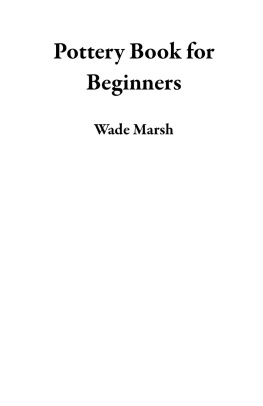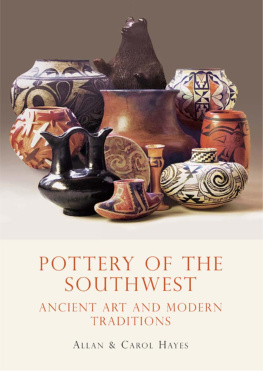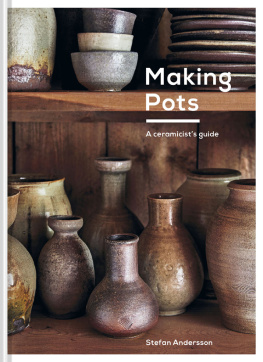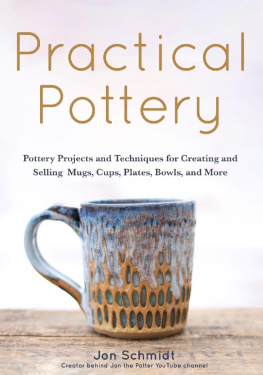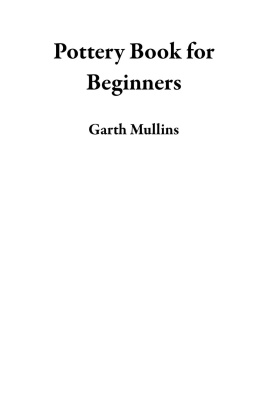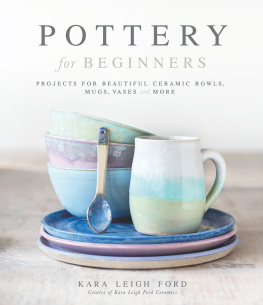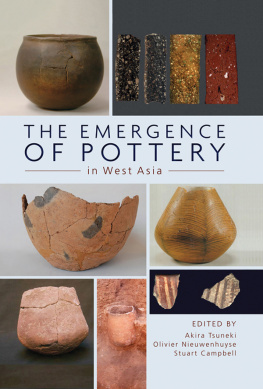Marsh Wade - Pottery Book for Beginners: An Instruction Guide for Potters to Sculpt Wheel Thrown and Handbuilding Ceramic Projects With Tips, Techniques and Pottery Tools Included
Here you can read online Marsh Wade - Pottery Book for Beginners: An Instruction Guide for Potters to Sculpt Wheel Thrown and Handbuilding Ceramic Projects With Tips, Techniques and Pottery Tools Included full text of the book (entire story) in english for free. Download pdf and epub, get meaning, cover and reviews about this ebook. year: 2021, publisher: Wade Marsh, genre: Romance novel. Description of the work, (preface) as well as reviews are available. Best literature library LitArk.com created for fans of good reading and offers a wide selection of genres:
Romance novel
Science fiction
Adventure
Detective
Science
History
Home and family
Prose
Art
Politics
Computer
Non-fiction
Religion
Business
Children
Humor
Choose a favorite category and find really read worthwhile books. Enjoy immersion in the world of imagination, feel the emotions of the characters or learn something new for yourself, make an fascinating discovery.
- Book:Pottery Book for Beginners: An Instruction Guide for Potters to Sculpt Wheel Thrown and Handbuilding Ceramic Projects With Tips, Techniques and Pottery Tools Included
- Author:
- Publisher:Wade Marsh
- Genre:
- Year:2021
- Rating:4 / 5
- Favourites:Add to favourites
- Your mark:
Pottery Book for Beginners: An Instruction Guide for Potters to Sculpt Wheel Thrown and Handbuilding Ceramic Projects With Tips, Techniques and Pottery Tools Included: summary, description and annotation
We offer to read an annotation, description, summary or preface (depends on what the author of the book "Pottery Book for Beginners: An Instruction Guide for Potters to Sculpt Wheel Thrown and Handbuilding Ceramic Projects With Tips, Techniques and Pottery Tools Included" wrote himself). If you haven't found the necessary information about the book — write in the comments, we will try to find it.
Pottery is a huge theme that revolves around a naturally derived organic matter called clay. It is one craft that has served many purposes, from the formation of earthen vessels to the very ceramic plates, cups and pots used in our homes and so much more. Pottery began right when the early men dominated the world, and since then, several techniques and processes have been introduced into the art, making it much more fun and seamless than before.
At first, being a potter might be a walk in the park, but studies reveal that nine out of every ten pottery crafts made ended up collapsing. Sometimes, the structures become too thin and then crumble. Other times, the walls could have absorbed more moisture than necessary, resulting in weak walls. Another prevalent issue is the pottery being unable to serve the function for which it was created. So, it ends up becoming more of an ornate piece.
These issues are some of the factors responsible for the complexity of pottery making. That is why this book, Pottery Book for Beginners, was written to provide you with top-level information to ensure your pottery craft comes out just as intended. With this book in your possession, you are on your way to becoming a successful potter in no time.
Below are some of the highlights covered in this book;
So, what then are you waiting for? Kickstart your pottery-making journey RIGHT NOW by getting a copy of this book to get started
Marsh Wade: author's other books
Who wrote Pottery Book for Beginners: An Instruction Guide for Potters to Sculpt Wheel Thrown and Handbuilding Ceramic Projects With Tips, Techniques and Pottery Tools Included? Find out the surname, the name of the author of the book and a list of all author's works by series.

